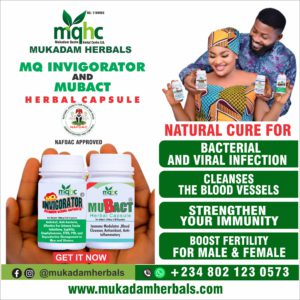𝐇𝐞𝐚𝐥𝐭𝐡 𝐁𝐞𝐧𝐞𝐟𝐢𝐭𝐬 Of 𝐕𝐢𝐭𝐚𝐦𝐢𝐧 𝐀
Vitamin A is the last in the series of fat – soluble vitamins. It is an essential nutrient, and is needed in small amounts.
𝑽𝒊𝒕𝒂𝒎𝒊𝒏 𝑨 𝒆𝒙𝒑𝒍𝒂𝒊𝒏𝒆𝒅:
There are two sources of dietary Vitamin A. Active forms which are immediately available to the body, are obtained from animal products. These are known as retinoids and include retinal and retinol. Precursors, also known as provitamins, which must be converted to active forms by the body, are obtained from fruits and vegetables that contain yellow, orange, and dark green pigments or carotenoids.The best known is beta – carotene.
Vitamin A is measured in micrograms ( mcg ) as well as in Retinol Equivalents ( RE ). 1.0 mcg of retinol or 6.0 mcg of beta – carotene.
In the intestine, Vitamin A is protected from being chemically changed by Vitamin E. Vitamin A is stored in the liver. When required by a particular part of the body, the liver releases some Vitamin A, which is carried by the blood and delivered to the target cells and tissues.
𝑼𝒔𝒆𝒔 𝒐𝒇 𝑽𝒊𝒕𝒂𝒎𝒊𝒏 𝑨: This vitamin plays an essential role in vision, particularly night vision, normal bone growth, reproduction, and the health of skin and mucous membrane – the mucous secreting layer that lines body regions such as the respiratory tract.
Vitamin A also acts in the body as an antioxidant, a protective chemical that may reduce the risk of certain cancers.
𝑽𝒊𝒕𝒂𝒎𝒊𝒏 𝑨 𝒅𝒆𝒇𝒊𝒄𝒊𝒆𝒏𝒄𝒚:
Get Instantly Update By: Joining Our Whatapps and Telegram Channel

In many developing countries, a dietary deficiency of Vitamin A is common, with pregnant women and infants being the most often affected in the West, a deficiency is rare, but may occur in people who abuse alcohol or those with long – term conditions that affect their ability to absorb fats, such as cystic fibrosis or Crohn’s disease. This is because Vitamin A is absorbed in fats. A common symptom of a severe deficiency of Vitamin A is the eye disorder xerophthalmia, in which the cornea ( the transparent membrane at the front of the eye ) hardens. This may progress to night blindness, corneal ulceration, and reversible blindness.
𝑵𝒊𝒈𝒉𝒕 𝒃𝒍𝒊𝒏𝒅𝒏𝒆𝒔𝒔 –
the inability to see well in dim light – is associated with a deficiency of Vitamin A. This vitamin is needed for the formation of rhodopsin. This is a pigment located in the eye’s retina, which is the light – sensitive tissue lining in the back of the eye.
Without adequate amounts of retinol, regeneration of rhodopsin is incomplete and night blindness occurs. ( Since carrots are a good source of beta – carotene, there is truth in the old saying that carrots can help you see better in the dark! ).
Other signs and symptoms include growth problems in children, poor would healing , and dry , bumpy skin rashes known as follicular hyperkeratosis. Vitamin A can also affect the normal functioning of mucous membranes throughout the body.
The recommended daily allowance of Vitamin A, is 700 mcg for men and 600 mcg for women.
𝑭𝒐𝒐𝒅 𝒔𝒐𝒖𝒓𝒄𝒆𝒔 𝒐𝒇 𝑽𝒊𝒕𝒂𝒎𝒊𝒏 𝑨:
Vitamin A 1, also known as retinol, is only found in animal sourced foods, such as oily fish, liver, cheese and butter. Liver – lamb, sausages, cod liver oil, king mackerel, salmon, tuna, trout, goose liver pate, goats cheese, camembert cheese, roquefort cheese, blue cheese, feta cheese, cream cheese, caviar and boiled eggs are all excellent sources of Vitamin A 1.
𝑽𝒆𝒈𝒆𝒕𝒂𝒃𝒍𝒆𝒔 𝒉𝒊𝒈𝒉 𝒊𝒏 𝑷𝒓𝒐𝒗𝒊𝒕𝒂𝒎𝒊𝒏 𝑨:
The body can produce Vitamin A from carotenoids found in plants. Sweet potato, winter squash, kale, collards, turnip greens, carrot, sweet red peppers,butternut squash, cabbage, carrots, Swiss chard, spinach, romaine lettuce are good sources of Provitamin A.
Fruits high in Provitamin A include mango, cantaloupe, pink or red grapefruit, watermelon, papaya, apricot, tangerine, nectarine, guava, passion fruit, are all high in Vitamin A.

